Fermenting Beer with CellarScience German Yeast
Published: July 25, 2025 at 7:55:05 AM UTC
Brewing the perfect lager demands precision and the right ingredients. The yeast strain used for fermentation is a critical element. CellarScience German Yeast, from Weihenstephan, Germany, is renowned for producing clean, balanced lagers. This yeast strain has been a cornerstone for generations, used in crafting a wide range of lagers. From pilsners to doppelbocks, it excels. Its high viability and sterol levels make it perfect for brewers, allowing for direct pitching into wort.
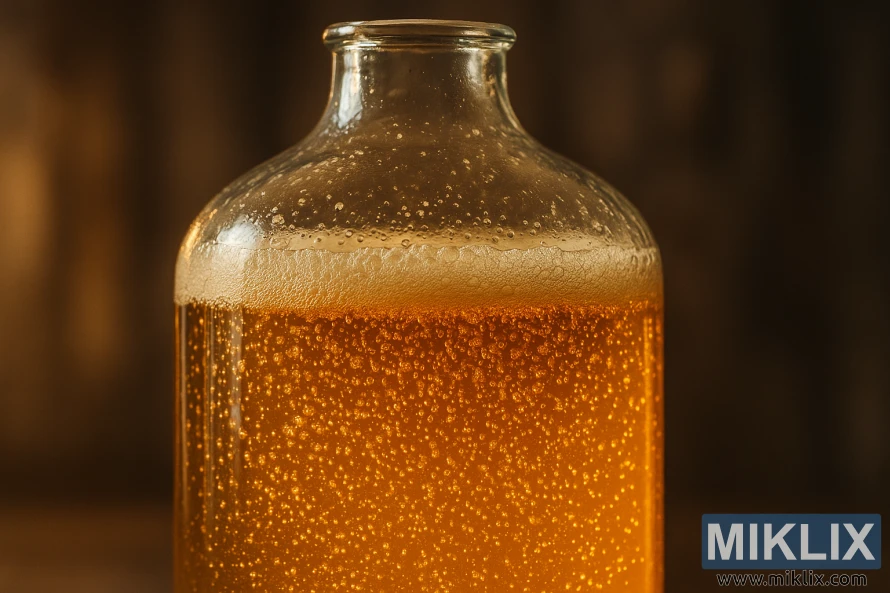
Key Takeaways
- CellarScience German Yeast produces clean, balanced lagers.
- Ideal for brewing a variety of lager styles.
- High viability and sterol levels for direct pitching.
- Suitable for brewers seeking consistency and quality.
- A trusted yeast strain in the brewing industry.
Understanding CellarScience German Yeast
CellarScience German Yeast is now accessible to homebrewers, enabling them to brew lagers with a professional touch. This yeast strain boasts a rich history, having been favored by professional breweries for years. Its roots are deeply embedded in traditional German brewing, renowned for its high-quality lagers.
The importance of CellarScience German Yeast lies in its ability to help brew lagers characteristic of German beer culture. With its recent packaging into sachets for homebrewers, enthusiasts can now create professional-grade lagers in their own setups.
Understanding the origins and heritage of this yeast is essential for appreciating its brewing capabilities. It has been a cornerstone in German brewing, contributing to the distinct flavor profiles and qualities of traditional German lagers. Its use by professional breweries has set a high standard, now available to homebrewers.
The availability of CellarScience German Yeast to homebrewers is a significant advancement in the brewing community. It closes the gap between professional and amateur brewing, allowing homebrewers to enhance their brewing skills. By using this yeast, homebrewers can replicate the authentic taste and quality of traditional German lagers.
In summary, CellarScience German Yeast is a valuable asset for both professional breweries and homebrewers. Its legacy in German brewing, combined with its recent availability in smaller packaging, is an exciting development for brewing enthusiasts aiming to produce high-quality lagers.
Technical Specifications and Viability
Every batch of CellarScience German Yeast undergoes rigorous PCR testing to guarantee its quality and viability. This meticulous quality control ensures that brewers can rely on consistent and high-quality fermentation performance.
The technical specifications of this yeast strain are designed to optimize its performance in homebrewing applications. High viability means that the yeast can be direct-pitched, simplifying the brewing process. Its sterol levels are also optimized for healthy fermentation, contributing to a cleaner and more consistent flavor profile.
- High viability for direct pitching
- Optimized sterol levels for healthy fermentation
- PCR tested for quality assurance
These specifications make CellarScience German Yeast an ideal choice for both novice and experienced brewers. It ensures high-quality fermentation results in homebrewing endeavors.
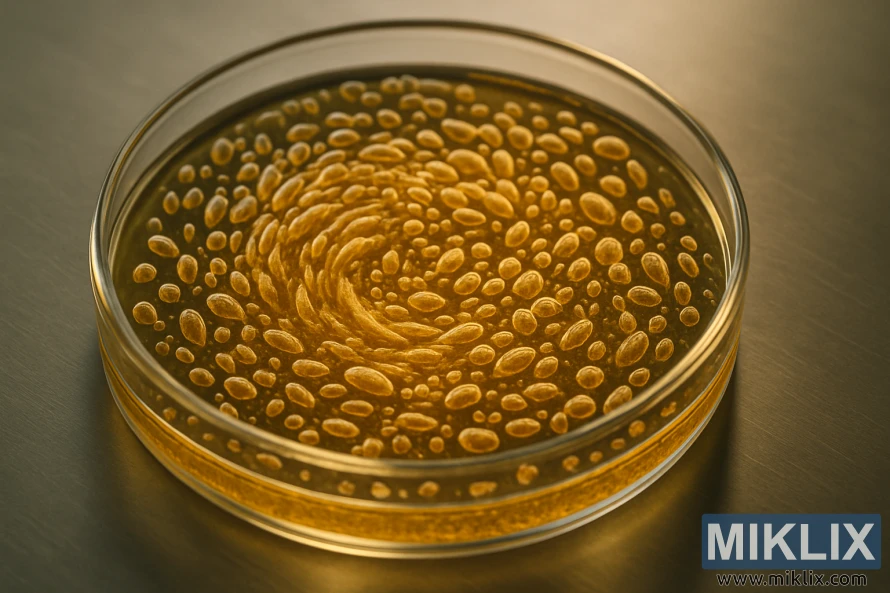
Optimal Fermentation Temperature Range
Achieving optimal fermentation with CellarScience German Yeast requires careful temperature control.
The ideal temperature range for fermenting with this yeast is between 50-59°F (10-15°C).
- Maintaining this temperature range ensures the production of clean, balanced lagers.
- Temperature control is vital for preventing off-flavors and achieving the desired fermentation characteristics.
- Brewing within the optimal temperature range enhances the overall quality and consistency of the beer.
By keeping the fermentation temperature within the specified range, brewers can optimize the performance of CellarScience German Yeast for homebrewing and beer fermentation.
This yeast strain is designed to perform well in cooler temperatures, making it ideal for brewing lagers and other cold-fermented beers.
Flavor Profile and Aroma Characteristics
CellarScience German Yeast is renowned for its role in brewing clean and balanced beers, a hallmark of traditional German brewing. It excels in producing lagers with a soft malt character and a balanced ester profile. This makes it perfect for brewers aiming to create authentic German-style lagers.
The flavor profile of beers fermented with CellarScience German Yeast is clean and free from off-flavors. This allows the natural ingredients of the beer to stand out. The balanced ester profile adds to a complex yet harmonious flavor experience, elevating the overall drinking pleasure.
In terms of aroma, CellarScience German Yeast produces beers with a subtle yet distinct aroma that complements the flavor. Its ability to ferment at cooler temperatures typical of lager brewing enhances the crisp, clean aroma associated with traditional German lagers.
Key characteristics of the flavor and aroma profile include:
- Soft malt character
- Balanced ester profile
- Clean and crisp flavor
- Subtle yet distinct aroma
Overall, CellarScience German Yeast is a versatile and reliable choice for brewers. It is ideal for producing high-quality beers with a traditional German character. Its performance in fermentation, combined with the desirable flavor and aroma characteristics it imparts, makes it a valuable asset in any brewery.
Attenuation and Flocculation Properties
The attenuation and flocculation properties of CellarScience German Yeast are vital for the beer's final characteristics. This yeast strain can ferment 78-85% of the wort's sugars, leading to a dry finish. This is a result of its high attenuation range.
Its high flocculation allows the yeast to settle out of the beer quickly. This contributes to a clear and bright final product. Brewers aiming for a clean and crisp flavor will find this beneficial.
Understanding and utilizing these properties can enhance the brewing process. Brewers can then produce high-quality beers that highlight the unique traits of CellarScience German Yeast.
For those looking to improve their brewing, considering the yeast's attenuation and flocculation is a key beer brewing tip. It can greatly influence the final product's quality.
Suitable Beer Styles for This Yeast
CellarScience German Yeast is perfect for brewing a variety of German lager styles. It excels in creating traditional German lagers, known for their clean and balanced fermentation. This yeast strain is a top choice for brewers aiming to craft authentic German lagers.
Some of the beer styles that benefit from using CellarScience German Yeast include:
- Pilsners: Known for their crisp, refreshing taste, pilsners are a classic German lager style that pairs well with this yeast.
- Bocks: A stronger, more robust lager, bocks benefit from the yeast's ability to ferment at lower temperatures, producing a smooth, rich flavor.
- Doppelbocks: As a stronger version of bocks, doppelbocks also benefit from the characteristics of CellarScience German Yeast, resulting in a complex, full-bodied beer.
For brewers looking to create authentic German lagers, CellarScience German Yeast is an excellent choice, providing valuable
By leveraging the strengths of this yeast, brewers can produce a variety of traditional German lagers. These beers are sure to please even the most discerning palates.
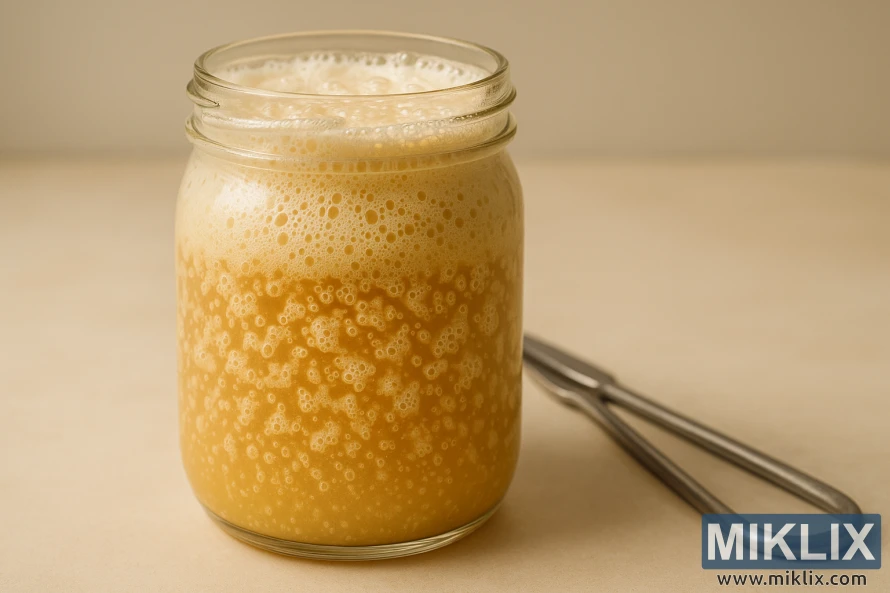
Packaging and Storage Requirements
The packaging and storage of CellarScience German Yeast are critical for its effectiveness in beer fermentation. The yeast comes in 12g sachets, which is up to 9% more than other brands. This allows for precise measurement and minimizes waste.
Proper storage conditions are essential to maintain the viability of the yeast. It is recommended to store the sachets in a cool, dry place, away from direct sunlight and moisture. This helps preserve the yeast's performance and ensures consistent fermentation results.
- Store in a cool, dry place
- Avoid direct sunlight
- Keep away from moisture
By following these storage guidelines, brewers can ensure that their CellarScience German Yeast remains effective and ready for use in beer fermentation. This attention to detail contributes to achieving the desired flavor profile and overall quality of the beer.
Pitch Rate Recommendations
When brewing with CellarScience German Yeast, understanding the optimal pitch rate is key to successful fermentation. The pitch rate is the amount of yeast added to the wort relative to its volume. It's a critical factor in achieving the desired flavor and character in your beer.
For CellarScience German Yeast, the recommended pitch rate ensures efficient fermentation. Two 12g sachets are sufficient for a 5–6 gallon batch. This provides the optimal amount of yeast for fermentation.
To achieve the best results, brewers should consider the following pitch rate guidelines:
- For standard strength beers, two 12g sachets are recommended for 5–6 gallons.
- Adjustments may be necessary based on the specific gravity of the wort and the desired fermentation characteristics.
- Proper rehydration of the yeast before pitching is essential for optimal performance.
By following these pitch rate recommendations, brewers can ensure successful fermentation with CellarScience German Yeast. This results in a high-quality beer with the desired flavor profile.
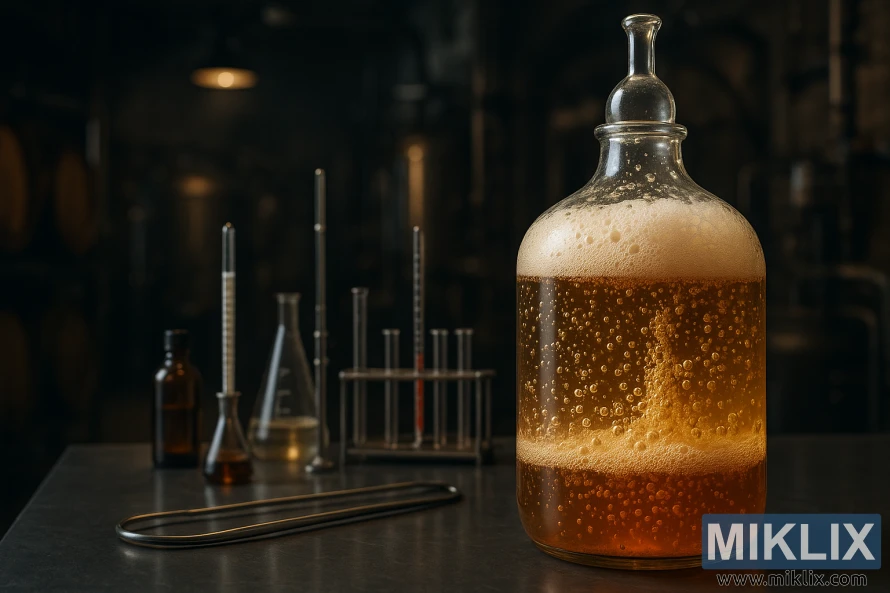
Performance in Different Wort Conditions
CellarScience German Yeast stands out for its flexibility in various wort conditions. This makes it a go-to for brewers. It excels in a range of temperatures and gravities, ensuring brewers get consistent results, even in tough conditions.
Its versatility is a boon for homebrewers, where controlling brewing parameters can be tricky. Whether you're brewing in a small setup or trying out new recipes, CellarScience German Yeast is a solid base for top-notch beer.
- Consistent fermentation performance across different wort gravities.
- Adaptability to varying fermentation temperatures.
- Reliable attenuation and flocculation characteristics.
These traits make CellarScience German Yeast a top pick for brewers aiming for consistent, high-quality beer. By grasping how this yeast handles different wort conditions, brewers can refine their brewing methods.
Comparison with Similar Yeast Strains
For brewers aiming to refine their fermentation process, comparing CellarScience German Yeast with other lager yeast strains is critical. This comparison aids in selecting the ideal yeast for their brewing goals and tastes.
CellarScience German Yeast is frequently compared to WLP830 and WY2124, renowned for their clean, crisp flavors typical of German lagers.
The fermentation performance is a key aspect of this comparison. CellarScience German Yeast, like WLP830 and WY2124, excels in fermentation. Yet, it might have advantages in temperature tolerance and flocculation.
- CellarScience German Yeast: Known for its consistent performance and high viability.
- WLP830: Recognized for its ability to ferment at cooler temperatures, producing a cleaner flavor profile.
- WY2124: Praised for its Bohemian Pilsner characteristics, with a balanced fermentation profile.
Brewers should weigh factors like attenuation, flocculation, and desired flavor profiles when comparing these yeast strains. Each strain has distinct traits, influencing the final beer's character. The choice hinges on the brewer's specific needs and the beer style.
In summary, while CellarScience German Yeast shares similarities with WLP830 and WY2124, its unique attributes make it a compelling choice for brewers. Recognizing these differences empowers brewers to make informed decisions for their brewing endeavors.
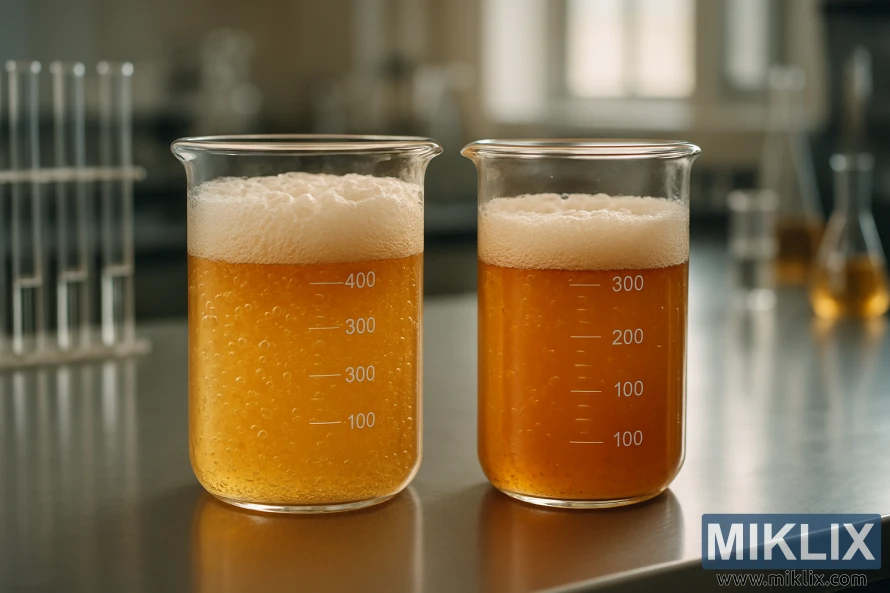
Common Brewing Challenges and Solutions
To achieve optimal fermentation with CellarScience German Yeast, brewers must tackle common challenges. These issues can significantly impact the quality of their beer. Understanding and addressing these problems is key.
One major challenge is controlling fermentation temperature. Fluctuations in temperature can cause inconsistent fermentation. This, in turn, affects the beer's flavor and aroma. To solve this, brewers can employ temperature control devices or ferment in a stable environment.
Another hurdle is finding the right yeast pitching rate. Pitching too little yeast can cause slow or stuck fermentation. On the other hand, pitching too much can result in over-attenuation, altering the beer's taste. Brewers can use a hemocytometer or a pitching rate calculator to find the perfect yeast amount.
- Monitor fermentation temperature closely to prevent temperature fluctuations.
- Use a pitching rate calculator to ensure the correct amount of yeast is pitched.
- Maintain proper sanitation practices to prevent contamination.
By tackling these common brewing challenges, homebrewers can enhance their fermentation success. This leads to the production of high-quality beers with CellarScience German Yeast. For more tips, brewers can refer to online resources or brewing guides.
Real Brewer Testimonials and Experiences
The effectiveness of CellarScience German Yeast is best shown through the testimonials of brewers who've used it. Many have praised its performance and ease of use. It's a top choice for various beer brewing tips.
Brewers have shared their positive experiences with CellarScience German Yeast. They've highlighted its ability to enhance the flavor and aroma of their beers. Here are some key points from their testimonials:
- Consistent fermentation results
- Easy to pitch and handle
- Improved beer quality and character
- Versatility in different wort conditions
One brewer noted, "Using CellarScience German Yeast has simplified our brewing process and improved the overall quality of our beers. It's a great yeast for brewing."
Another brewer shared, "We've tried several yeast strains, but CellarScience German Yeast stands out for its reliability and performance. It's now our go-to yeast for most of our recipes."
These testimonials show the value of CellarScience German Yeast in real-world brewing. Whether you're a novice or experienced brewer, this yeast can help you achieve your brewing goals.
Cost Analysis and Value Proposition
Evaluating the cost and value of yeast strains is essential. CellarScience German Yeast presents a compelling case. For brewers, yeast cost is a major expense. This yeast is renowned for its quality and performance, appealing to both homebrewers and professionals.
The price of CellarScience German Yeast is competitive with other top-tier yeast strains. Its viability and consistent performance mean less frequent repitching, saving costs over time. The yeast's ability to produce consistent flavors also boosts beer quality, potentially increasing customer satisfaction and loyalty.
Understanding the value of CellarScience German Yeast requires examining its brewing benefits. It ferments optimally at specific temperatures and has high attenuation properties. These traits streamline the brewing process. The yeast's flocculation characteristics also ease beer clarification, reducing post-fermentation processing time and effort.
- Cost-effective compared to similar yeast strains
- High viability and consistent performance
- Enhances beer quality and consistency
- Simplifies brewing and post-fermentation processes
In conclusion, CellarScience German Yeast offers a robust value proposition for brewers. Its quality, performance, and cost-effectiveness make it a standout choice. It allows brewers to optimize their operations without sacrificing beer quality.
Conclusion
CellarScience German Yeast stands out as a top pick for brewers aiming to craft premium lagers. Its high viability and consistent performance make it perfect for both hobbyists and professionals. This yeast is a reliable ally in achieving high-quality results.
By embracing beer brewing tips and using CellarScience German Yeast, brewers can hit the mark in fermentation. Its versatility and simplicity make it a go-to for brewing traditional German lagers and other styles. It's a testament to the yeast's adaptability and ease of use.
A detailed CellarScience yeast review showcases its strengths. It excels in producing consistent flavor profiles and thrives in various wort conditions. With CellarScience German Yeast, brewers can confidently brew exceptional beers that meet their highest standards.
Further Reading
If you enjoyed this post, you may also like these suggestions:
- Fermenting Beer with White Labs WLP351 Bavarian Weizen Ale Yeast
- Fermenting Beer with Lallemand LalBrew Köln Yeast
- Fermenting Beer with White Labs WLP925 High Pressure Lager Yeast
